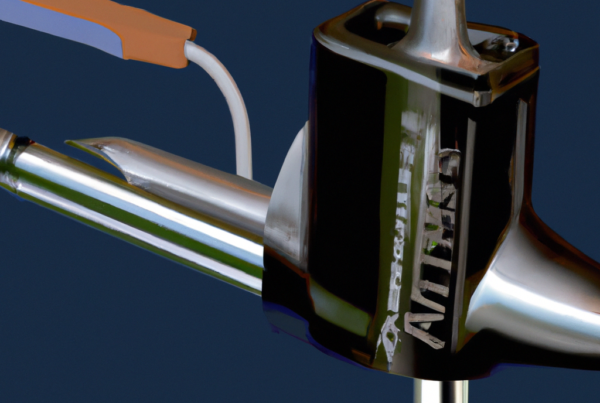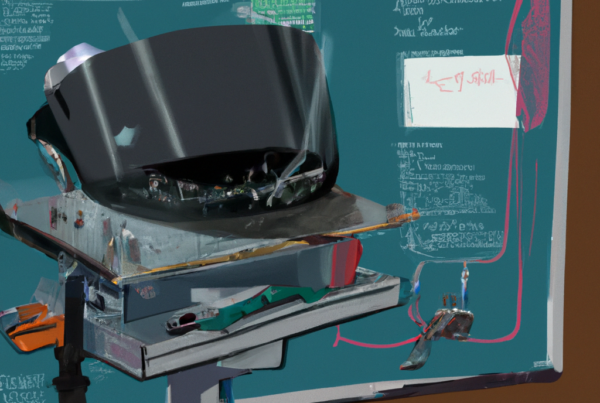The Basics of MIG Welding
If you are a person who is interested in getting into welding or would like to understand the welding process better, it is important to grasp this elementary type of welding process. However, before jumping into an explanation of it one must understand that this is still a welding process that requires a great deal of skill and a high degree of caution whenever using. Any type of welding process has the potential for serious injury. The welder is using that will produce a great deal of heat, and one can easily be injured, either by the heat or by the byproducts of the weld. This is why you will always find welders using such things as gloves and goggles to protect themselves. Many even where thick, heavy duty clothing to add additional layers of protection.What’s Special in Mig Welding?
What separates MIG welding from many other types is that an inert gas is one of the key elements. This makes it free from undergoing any kind of chemical reaction during the process. Chemical reactions such as hydrolysis or oxidation. In doing so, it creates a much more stable well while allowing the materials used in the weld to maintain their chemical characteristics. This is one of the most important parts of using an MIG weld. By eliminating any kind of chemical reaction with elements in the atmosphere, such as oxygen, nitrogen, or carbon, it ensures that the weld that is produced is free from potential weakened spots that can come as a result of chemical reactions with these elements. For example, if one is welding iron, there is always a concern with iron reacting with oxygen in the air to form iron oxide, commonly known as rust. If this should get into the weld, it creates a weakened spot which poses a potential risk to the weld itself. However, when using the MIG type of welding process, oxygen is not added to the weld protecting from rust developing.Equipments Needed for MIG Weld
To effectively use the MIG welding process, it is important to understand the different pieces of equipment that are used in this operation. Here are the key parts.#1 Welder
The MIG welder is where the school of the electrode wire is located. This is necessary for creating the anode, or the positive and of the circuit. Located at the welder are rollers that push the electrode wires toward the welding done. The tension nut helps to keep this electrode wire spool secured. It is important to understand that if the wire is unable to continue to feed, then something is wrong with this part of the welder.#2 MIG Wire
The MIG wire is one of the most important pieces in this process. There are different types of wires that you can use. The title wire you employ is based upon the metal workpiece that is being welded. For example, if a weld using stainless steel is being created, then ER308L type wire is necessary. The size of the wire is also important. The thinner the gauge of the metal, the smaller the wire that is needed. For example, when welding a metal sheet that is a thin 24-gauge, it is necessary to use a 0.23 inch wire to create a good weld.#3 Welding Gun
For those looking to create an MIG weld, it is important to have a full understanding of the welding gun. How the welder controls the different settings on this device is the difference between a good weld and a great one. It not only matters in how the gun is held, but how it is used and positioned in relation to the weld. While there are different MIG welding guns, there are common traits that are found among them all. The first of these is to trigger. The trigger is used to control the flow of electricity as well as how the electrode wire is being fed. Located at the tip of the gun is a protective layer. This can be made of either metal or ceramic and protects the electric wire while also directing how the inert gas flows.#4 Ground Clamp
The ground clamp is the last major piece of equipment in the MIG welding process. This piece helps to complete the circuit between the electrode wire and the metal workpiece surface. The job of the ground clamp is to hold the metal workpiece in place. It is important to keep in mind that this ground clamp should always be used to make a connection between the metal pieces that you are welding.How MIG Welds Work
An MIG weld is one that uses an electric arc that forms a short circuit between the two surfaces that are being welded together. Both surfaces must be metallic. This is one of the limitations to this type of well. Some welds allow the welder to combine non-metallic surfaces, but this is not the case with the MIG weld. In this welding process, the welding gun contains an electrode wire. As the welding gun is discharged, it creates a positive end near the welding gun itself, often referred to as the anode. On the other end of the circuit is a negative charge, referred to as the cathode. This other end is directed against the metal where the weld is intended to be applied. This electrical energy that is discharged creates a high degree of heat. As the metal begins to warm, it liquefies to appoint. This allows the welder to combine the two metals together by basically melting one into another. While the heat is quite substantial, it does not generate enough heat to cause the inert gas used to react with the metals themselves. Instead, these inert gases act as a shield, protecting the welding area from contamination by atmospheric conditions.Why Does One Use MIG Weld?
What you will find is that there are welding processes that work particularly well in certain types of industries. One thing that makes MIG welding extremely popular, beyond the ease of mastery, is the fact that many different types of metals can be welded using this process. This includes such things as nickel, magnesium, copper, aluminum, stainless steel, carbon steel, silicon bronze, and other types of alloys. It also allows the welder the ability to weld metals of different thickness together. A thin layer of metal can easily be welded to one that has a thicker layer. Materials that are both thick or where both are thin can easily be welded as well. The benefits of this type of weld go far beyond these, however. If a person is welding at different angles or in confined spaces, MIG welding can be a perfect choice. A welder can literally use this process in almost all positions. It also doesn’t produce a great deal of weld splatter, so cleanup is quick and easy. Despite not producing much splatter, a good weld bead is still produced.Advantages & Disadvantages of MIG Welding
As you can see, there are many great advantages to using this type of welding process. Because of the ease of use and the fact that most are able to easily master this process, it has become one of the most other. For beginning welders, and is almost mandatory to learn and master this process to advance.Advantages of MIG Welding
- Allows for the combining of several different kinds of metals.
- An easy type of welding process to learn how to master.
- Allows for the welding of different thicknesses of materials.
- Only a minimum amount of welding’s bladder is produced.
- Allows for welding capability in a variety of positions.
Disadvantages of MIG Welding
- Does not work well with extremely thick metal material.
- Because inert gases are used, it limits the portability of the welding process.
Can the Same Set Up Steps be Applied for a MIG Welder?
When setting up a tig welder, different steps apply compared to a MIG welder. While both processes involve setting up the power source, selecting the appropriate gas, and preparing the workpiece, the specific procedures differ. Therefore, the same set up steps cannot be directly applied to both MIG and TIG welding due to their distinct requirements and techniques.
Where Is MIG Used?
Because of its advantages, it is easy to see why this type of weld would be perfect for certain industries.- Automotive Industry. Its most common use is in the automotive industry. The reasons behind this are obvious. First off, it is easy to use this weld and to make quality connections that are perfect for cars, motorcycles, recreational vehicles, and other types of automobiles. It is also easy to repair if there is any kind of damage, and these types of welds can be put together quickly and efficiently. In an assembly-line situation it is absolutely perfect.
- Construction. Construction is another place where this type of weld is frequently used. Often houses, fabricated structures, and buildings use metals of similar types that need to be bound together. A solid weld can be created using the MIG technique. Plus, the ability to perform welds in almost any position really makes it a great choice.
- Other Industries. The same benefits that the automotive industry finds for the MIG process are applicable in any type of industry where high production welding is needed. On an assembly line at an automotive plant, cars moved down the line and need to be processed quickly and effectively so they can be moved to market in short order. There are many industries like this where quick welds need to be produced, but those welds need to be of great quality. Other areas where you may see MIG welding processes used include manufacturing, railroads & shipping.



